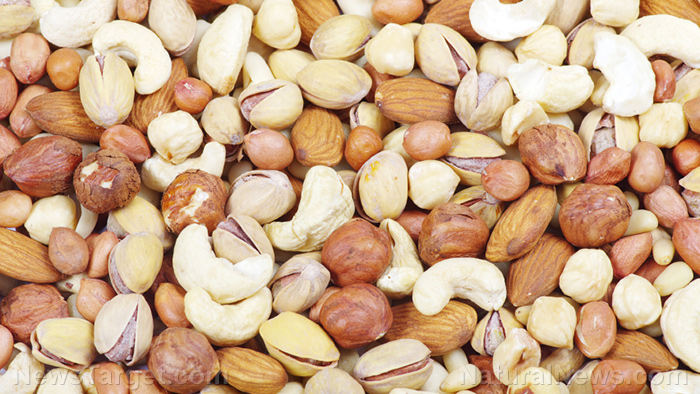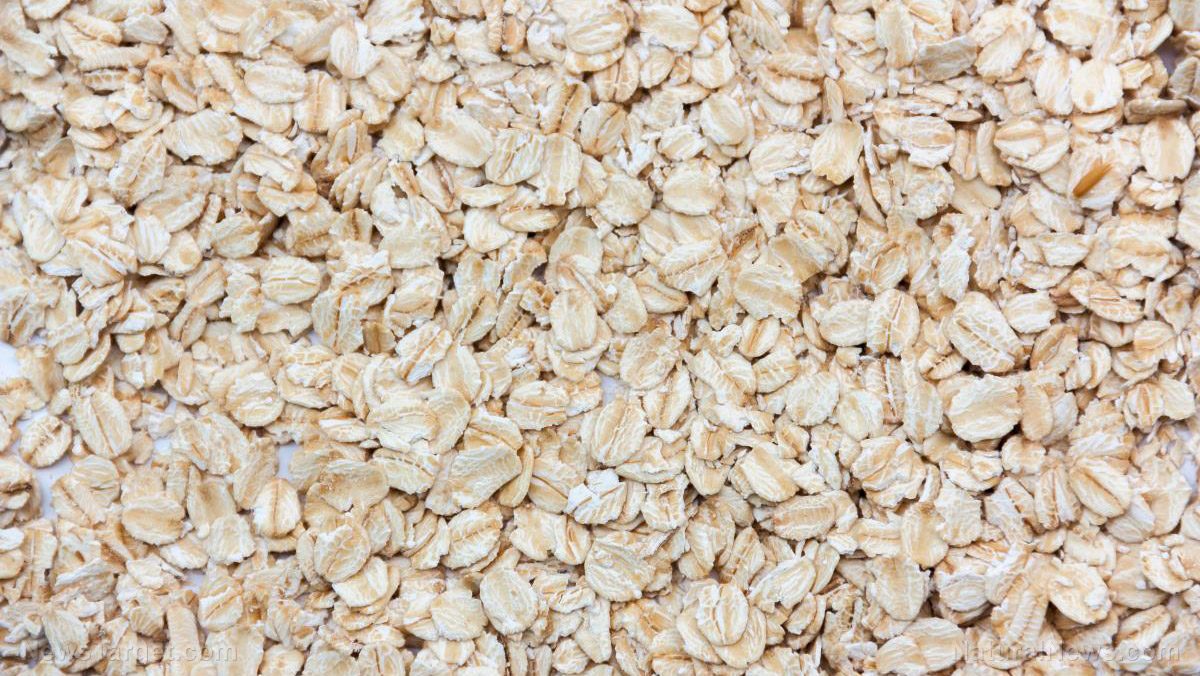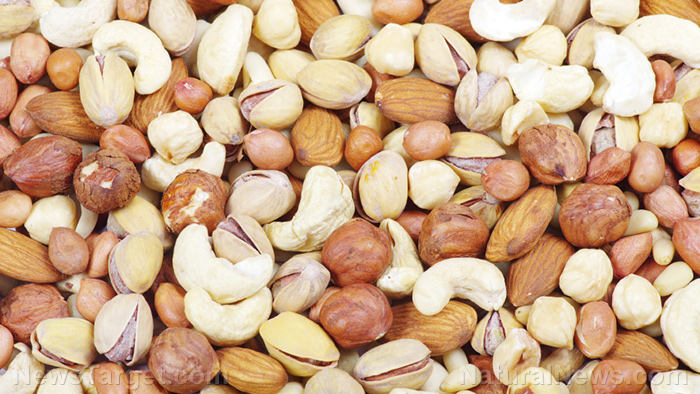Nuts are brain food: Study reveals consuming nuts during pregnancy may help improve brain development in children
11/03/2019 / By Grace Olson

For expecting mothers, eating nuts while pregnant may improve the brain development of the child, a study finds. Researchers from the Barcelona Institute for Global Health found that nut consumption in the first trimester of pregnancy was linked to better cognitive function, attention capacity, and long-term working memory in children. They published their findings in the European Journal of Epidemiology.
Nuts make babies smarter
There are many health benefits associated with nuts, including reducing the risk of hypertension and protecting against cognitive decline. The researchers in this study wanted to find out if nuts also had positive effects among pregnant women and their babies. (Related: Eating Nuts Greatly Reduces Your Risk of Heart Attack and Cancer.)
They gathered over 2,200 mother and child pairs, who were part of the INMA or Infancia y Medio Ambiente (Environment and Childhood) project. It is a network of birth cohorts dedicated to studying how environmental pollutants affect child growth and development during pregnancy and early childhood.
The participants answered questionnaires on eating habits in the first and last trimester of their pregnancy. The nuts considered were hazelnuts, walnuts, pine nuts, peanuts, and almonds. After the children were born, the researchers measured neurodevelopment among them, using internationally validated tests. The markers for brain development included cognitive function, attention capacity, and working memory. They administered the tests at different points of the children’s lives: 18 months, five years, and eight years old.
Their findings revealed that the children whose mothers ate more nuts during the first trimester of pregnancy got the best scores in all the tests.
The researchers attributed these effects to the high levels of folic acid and essential fatty acids (omega-3 and omega-6) found in nuts. Both compounds are known to help improve cognitive function. They also tend to accumulate in the frontal areas of the brain, the parts that influence memory and other executive functions.
The mothers with the highest nut consumption ate just below three 30 g servings per week. This was still below the recommended intake of the Spanish Society of Community Nutrition, which is three to seven servings per week. The researchers suggested that eating the recommended intake of nuts per week may have better health benefits.
The researchers believed that this was one of many pieces of evidence supporting the link between maternal diet and a baby’s development. They further suggested that there may be specific periods during pregnancy, where the baby’s development is more sensitive to the mother’s diet. While further study is needed, people, especially pregnant women, should consider adding nuts to their meals.
The healthiest nuts to add to your diet
There is a wide variety of nuts on the market, and they can be added to different types of meals and snacks, like granola bars or trail mixes. However, some kinds of nuts are better than others when it comes to specific health benefits. Here are some of the healthiest nuts to eat as snacks or added to meals:
- Almonds. They are relatively low in calories, and they offer the highest amount of calcium among nuts. Aside from that, they are also rich in fiber and vitamin E, an antioxidant which helps prevent inflammation and diseases.
- Cashews. They are rich sources of iron and magnesium. Not only do they promote healthy heart and bones, they promote skin and hair health as well.
- Peanuts. Despite being legumes, they are usually categorized as nuts. They contain high amounts of folate, an essential form of vitamin B that helps in brain development.
- Walnuts. They contain heart-healthy alpha linoleic acid (ALA), which may help heart arrhythmia. Aside from that, walnuts also contain high amounts of antioxidants, which help prevent cancer.
- Hazelnuts. They are rich in unsaturated fats. These compounds help lower bad cholesterol in the body and reduce inflammation.
Nuts offer many healthy benefits, but make sure to check with your healthcare provider first before a sudden increase in intake. Ensure a mother and child’s health by eating the right amount every day. Learn more about other foods that support children’s development at Food.news.
Sources include:
Tagged Under: almonds, attention capacity, brain development, brain food, brain health, brain nutrients, Cashews, child development, child growth, clean food, cognitive function, essential fatty acids, folic acid, food cures, food remedies, grocery, Hazelnuts, ingredients, maternal diets, neurodevelopment, nuts, Peanuts, pregnancy, pregnancy diet, research, Walnuts, working memory
RECENT NEWS & ARTICLES
FoodIsMedicine.com is a fact-based public education website published by Food Is Medicine Features, LLC.
All content copyright © 2018 by Food Is Medicine Features, LLC.
Contact Us with Tips or Corrections
All trademarks, registered trademarks and servicemarks mentioned on this site are the property of their respective owners.



















